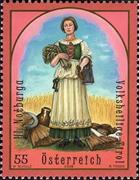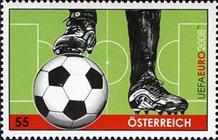Austria stamps
P=have O=don’t have it
http://en.wikipedia.org/wiki/Austria

Scott: #B219P
Issued: 30.8.1947
Prisoners of War

Inside #B219: Stamp on Envelope

Scott: #B268P
Issued: 3.12.1949
Stamp Day
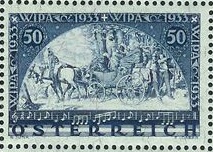 Inside #B268:
Inside #B268:
The stamp shows three
letters, each provided with one of the most valuable pearls of Austrian stamp
art - the WIPA stamp of
SOSCO ARTICLE: STAMPS UNDER GLASS (SUG's REVISITED) by Judy
Hornaday http://www.stampsonstamps.org/sugrv.htm

Scott: #572P
Issued: 20.5.1950
100th
Anniversary of Austrian Stamps
 Inside #572:
Inside #572:
On the occasion of the
100th anniversary of the Austrian stamp, the Postal and Telecommunications
Administration issued a brown-black commemorative stamp. The stamp shows the
double-headed eagle of the Austrian coat of arms on a shield, the imperial
crownabove it, a sprig of laurel to the left and a sprig of oak to the right.
The inscription at the top reads "K.K. Poststempel" (imperial-royal
postal stamp). The first Austrian stamps were made by Dr. Johann Jakob Herz
upon the instructions of the ImperialCouncil. In the Gazette for Posts, Railway
Companies and Telegraphs No. 25-28 issued by the Imperial-Royal Ministry of
Trade, Industry and Public Works, the regulations on postal rates and their
collection by means of stamps were published on April 27, 1850 and took effect
on June 1, 1850. The year when the regulation was published can be seen as the
birth of Austrian stamps and provided the occasion for issuing this jubilee
stamp. (www.post.at)

Scott: #B272O
Issued: 2.12.1950
Stamp Day
Inside #B272: Stamp Collecting
On December 1, 1950,
when the "Day of the Stamp" exhibition was opened, it was 15 years to
the day that this day was celebrated for the first time in both
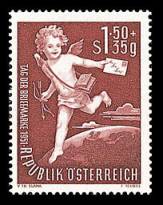
Scott: #B278O
Issued: 10.3.1952
Stamp Day
Inside #B278:
The motif of this
special issue stamp shows Cupid with a postman's bag slung over his shoulders
running on a globe. He holds a letter in his left hand, and bow and arrow in
his right hand. By a resolution of the Council of Ministers dated December 18,
1951, the surcharge of ATS 0.35 on this stamp was earmarked for the promotion
of Austrian stamps at home and abroad to be supported by the Federation of the
Philatelic Associations of Austria and the First Austrian Workers' Association
of Stamp Collectors. Thus, this stamp was an international ambassador of the
Austrian postal system. It paid tribute to the festive day of philately by
conveying greetings from

Scott: #B286P
(Thanks to Lou Guadagno)
Issued: 5.12.1953
Stamp Day
Inside #B286: Stamp Collecting
The stamp shows a globe
floating into an open stamp album. A ribbon carrying the inscription "Tag
der Briefmarke 1953" (Day of the Stamp 1953) is wound around the globe.
The picture is rounded off by a magnifying glass and tweezers, the utensils of
philatelists. The surcharge on this stamp was earmarked for promoting Austrian
stamps at home and abroad and for supporting Austrian philately. The stamp also
was to remind of the artistic significance of stamps that goes far beyond their
function in everyday use. While stamps had usually shown the portraits of
rulers, heraldic animals or ornamental numbers, i.e. realistic pictures, until
the turn of the century, Austrian stamps have also been decorated by artistic
motifs since

Scott: #B296P
(Thanks to Lou Guadagno)
Issued: 3.12.1955
Stamp Day
Inside #B296: Stamp Collecting
December 1, 1995 marked
the 20th anniversary of the first celebration of the Day of the Stamp by the Federation
of Austrian Philatelist Societies. This event took place at the

Scott: #B297PP
Issued: 1.12.1956
Stamp Day
Inside #B297:
Against a dark
background, the stamp shows a board with ornamental strips at the left and
right longitudinal sides. The board is decorated with a cornucopia with stylised
flowers and a post horn. In the lower half of the board, the cornucopia is
covered by an envelope carrying the inscription "Tag der Briefmarke
1956" (Day of the Stamp 1956) and the stamp dedicated to this occasion.
The stamp is cancelled by the postmark of the Vienna Post Office 1 dated
December 1,

Scott: #B302P
Issued: 2.12.1960
Stamp Day
 Inside
#B302:
Inside
#B302:
The stamp shows the
proof printed during engraving work from the original plate of the ATS 3.50
stamp from the Hunting series of 1957, seen through a magnifying glass. The
engraver needs the proof in order to ascertain whether the desired colour tones
arealready achieved on the original printing plate. The importance of this
examination results from the fact that the engraver can only add to the lines
and dots. A reduction of the lines would impair printing accuracy and, thus,
the engraving's clarity. When scrutinising a print trough a magnifying glass,
as is shown by the present stamp, the beholder can easily see the purity of
line. It is up to the experience and considerations of the engraver that the
lines and dots are originally spaced in such a way that, after the engraving's
completion, the gradation of the small stamp corresponds to the original
prepared by the designer. (www.post.at)

FDCP

Scott: #B303P
Issued: 01.12.1961
Stamp Day
Inside #B303 (On FDC): Stamps album

Scott: #B304P
Issued: 30.11.1962
Stamp Day
Inside #B304: Stamp Engraving
It is a pleasant duty
of the Austrian Postal and Telecommunications Administration to support foreign
and domestic stamp collectors, and to raise the popularity and distribution of
stamps. The annual stamps dedicated to the "Day of the Stamp" are
ambassadors, so to speak, of the Austrian postal system and pay tribute to the
festive day of philatelists by conveying greetings from

FDCP

FDCP

Scott: #B321P
Issued: 3.12.1965
Stamp Day
Inside #B321: Stamps on Envelopes
The stamp shows a
postman dropping letters into a letter-box. The inscriptions "Tag der
Briefmarke" (Day of the Stamp) and "Republik Österreich" (

FDCP

Foglietto
IFA WIEN 1968O

Scott: #1005O
Issued: 9.10.1974
100th
Anniversary of the Universal Postal
Inside #1005: Stamp on Envelope
The foreground of the
stamp honoring this occasion shows an Austrian letter carrier in summer outfit
wearing a cap, as issued since 1961. Behind the letter carrier is a stylized
portrayal of postal transport at

Scott: #B339P
Issued: 28.11.1975
125th
Anniversary of Austrian Postage Stamps
 Inside #B339:
Inside #B339:
 Inside #B339:
Inside #B339:
 Inside #B339:
Inside #B339:
In 1975 the Austrian
postage stamp celebrated a very special anniversary. Exactly 125 years have
passed since the postal administration issued the first Austrian postage stamps
on June 1, 1850. Stamps issued back then are the prized specimens of every
collection today. The world's first stamps were issued in

Scott: #1173P
Issued: 6.4.1981
Wilhelm Dachauer, Artist and
Engraver
 Inside #1173:
Inside #1173:
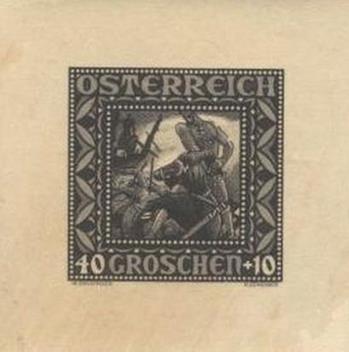
Dachauer's Essay
(Thanks to Lou for the scan)

Scott: #B347P
Issued: 21.10.1983
Day of the Stamp / Child with Envelope
Inside # B347: Stamp Collecting
The idea to introduce a
day of the stamp was proposed already in 1933 by the president of the
Federation of German Philately Associations, Major von Rudolphi. It met with
great enthusiasm by the individual regional associations, including

Scott: #B368P
Issued: 23.5.1997
Wipa 2000
 Inside #B368:
Inside #B368:
The Vienna
International Postage Stamp Exhibit "WIPA 2000" will take place from
May 30 to June 4, 2000. This exhibit will carry on the tradition of the WIPA
(Wiener Internationale Postwertzeichen- Ausstellungen) established with the
exhibits "WIPA 1881", "WIPA 1933", "WIPA 1965",
and "WIPA 1981". In addition, the 150th anniversary of Austrian
postage stamps will also be celebrated. The first postage stamps were issued in
The idea behind the
special issue series "


1987

Austria-Hungary #28

Scott: #B369P
Issued: 6.11.1998
Wipa 2000
 Inside #B369:
Inside #B369:
For the Post and
Telekom Austria AG the Vienna International Postage Stamp Exhibition (WIPA),
which will take place in the year 2000, will be an outstanding event. On one
hand this exhibition gives a solemn surrounding for the 150th Anniversary of
the issue of the first Austrian stamp and on the other hand it is a good
platform to promote Austrian stamps and to show their top level as regards
production.
Also gives such an
important philatelic event like the WIPA

Scott: #B370P
Issued: 17.9.1999
Wipa 2000
 Inside # B370:
Inside # B370:
This stamp is the third
in a special issue series dedicated to "WIPA 2000", which takes place
in honor of the 150th anniversary of
This stamp is dedicated
to the
The stamp shows an
airplane with mail being loaded onboard as a typical means of postal transport.
(www.post.at)
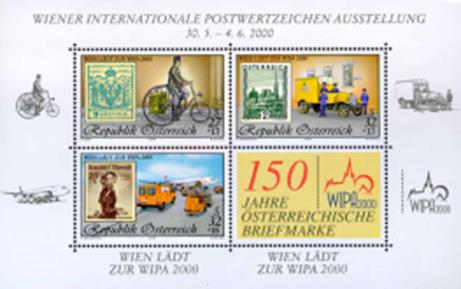
Scott: #B370aO
Issued: 21.1.2000
See Scott: #B368, #B369, #B370
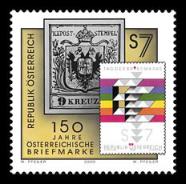
Scott: #1819P
Issued: 30.5.2000
150th
Anniversary of Austrian Postage Stamps
 Inside #1819: Austria #5P?
Inside #1819: Austria #5P?
 Inside #1819:
Inside #1819:
In the 1950s news that
the world's oldest postage stamp had surfaced and that it originated from
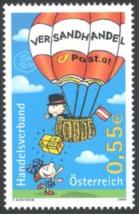
Scott: #1934O
Issued: 24.9.2003
Mail-Order
Trade
Inside #1934: Parcel with stamps
With over 500,000
employees in 20 different sectors, the Austrian retail trade is continuously
growing as an important factor of the economy. The retail trade is becoming a
major factor in the creation of wealth in the economy as a whole, a result of
the change from an industrial to a service society. While the creation of
wealth used to be regarded as only the production of goods, we are aware today
that trade with its innovatory ideas makes products more valuable, thereby
creating substantial wealth.
The Austrian retail
trade, accounting for roughly 14% of the creation of wealth in the country, is
well above the European average.
While small retail
businesses, due to the need for large investments, can only contribute little
to the creation of wealth, the large retail chains account for over 20% of
turnover. A major factor is the mail-order trade, of which roughly 45% of
adults above the age of 15 - 3.5 million individuals - are customers.
There is a huge
difference between male and female customers, with 53% of all Austrian women
but only 37% of men buying from mail-order companies. (www.post.at)

Scott: #2077P
Issued: 8.12.2006
100th Anniversary of the Austrian Stamp & Coin Dealers
Association
 Inside
#2077:
Inside
#2077:
There have been stamps
for 160 years, and for about 160 years they have been collected and traded.
There have been philately clubs for about 140 years, retailers' associations
for 120 years and in 2006 the Austrian Stamp Dealers Association is also
celebrating its 100th birthday. Seven Viennese stamp dealers, Rudolf Friedl,
Moritz Grünberg, Otto Waldemar Friedl, Karl Körner, Leopold Traub,
Dagobert Wlaschim and Fanny Grossmann, founded the Austrian Stamp Dealers Club
in 1906. Its first chairman was Rudolf Friedl, a dealer famed throughout
Thanks to Lou Guadagno
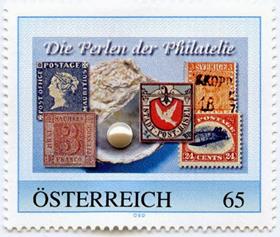
Issued: 2009
Austria 2009 The Pearl
of Philately Stamp with half pearls affixed Issue date 06 May 2009.
From May 6 to May 10,
2009, Essen (Germany) simultaneously hosted the International Philatelic Exhibition
(IBRA), the National Stamp Exhibition (NAPOSTA), and the 19th International
Stamp Fair. An Austrian Post issued p-stamp (Personalised
Stamp) issued on the occasion of philatelic exhibition
' IBRA - NAPOSTA ' 09 ' in Essen (Germany).
The p-stamp features a half pearl affixed on the stamp surrounded
by the other philatelic pearls or you could say legends on stamp collecting.
The legendary stamps featured on this stamp are:

The rare Mauritius Two
Pence Blue(1847) which was one of the star attraction
at the philatelic exhibition at Essen. According to the legend, Barnard
had engraved "Post Office" instead of "Post Paid" by
mistake. The latter appellation was to be seen on all
Mauritian stamps during almost twenty years. Much later
it was proved that "Post Office" was really the legal term used for
the Post in those days.
The "Mauritius Post Office" stamps have become rare gems of world
philately. They are in fact the first Mauritian stamps, among the very first in
the world. They are also among the rarest because only 500 of these stamps were printed for the Mauritian Post.

The Basel Dove Stamp The Basel Dove Stamp is one of the world’s first tricolor
postage stamp. The stamp was issued on July 1, 1845 by the
Canton of Basel (member state of the federal state of Switzerland). It
has a face value of 2 ½ rappen
and was the only stamp issued by Basel. It is the world’s first tricolor stamp
printed in black, crimson, and blue. The stamp was designed by Melchior Berri
which featured a white embossed dove carrying a letter in its beak, and
inscribed with “STADT POST BASEL”

The first stamp of
Saxony (Sachsen in German), issued in 1850, shown above, is one of the rarest
of classical European stamps. An estimated 3,000 to 4,000 copies are thought to exist today, and many of them are repaired.
This is also one of the most forged of the classical European stamps, most
notably by Fournier.

The Three Skilling Yellow (1855), a rare color
error of the first stamp from Sweden

The 'Inverted Jenny' Error stamp from USA
(1918)
http://philaquelymoi.blogspot.com/2013/12/stamps-with-pearls-update.html

Scott: #2257P
Issued: 20.5.2010
90th Anniversary of the
 Inside #2257: Austria #878P
Inside #2257: Austria #878P
There is no doubt that
the Salzburg Festival is one of the most important cultural events in
The birth of the
Salzburg Festival was marked by Hugo von Hoffmannsthal’s famous drama
“Everyman”, first performed on the
In more recent times,
the Festival has been dominated above all by two personalities: the conductor
Herbert van Karajan and the Belgian artistic director Gérard Mortier.
The Karajan age was characterised by the highest musical quality and the
involvement of international stars, which led to a certain artistic stagnation
towards the end of his era. It was then Mortier who opened up the Festival to
new movements and gave more importance to theatre again. Mortier’s successor
was Peter Ruzicka, who was followed in 2007 by the director Jürgen Flimm,
while the office of President has for years been held by Helga Rabl-Stadler. From
2011, Sven-Eric Bechtolf will be the new head of theatre at the Salzburg
Festival, taking over this function from the future artistic director Alexander
Pereira. (www.post.at)
Thanks to Prof. Plinio Richelmi
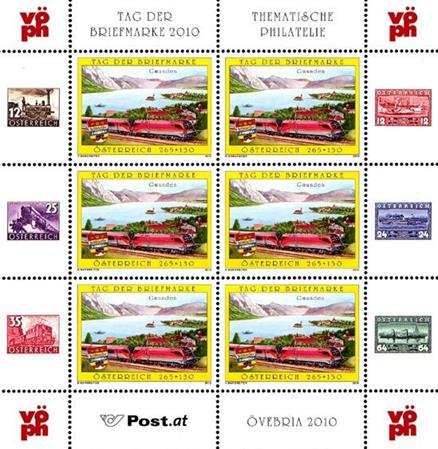
Scott: #B385O
Issued: 30.8.2010
Day of the Stamp 2010
Inside #B385:
|
|
|
|
|
|
|
|
|
|
|
|
|
|
|
|
|
|
Day of the Stamp 2010
The traditional “Day of
the Stamp” commemorative, with a surcharge of EUR 1.30 to support organised
philately in
Talking of Gmunden:
This town with its population of 13,000 is located on the north shore of
The Railjet shown on the stamp, in contrast, is a high-speed intercity
push-pull train operated by ÖBB-Personenverkehr AG and in commercial
service since the start of the 2008/2009 timetable. It was first presented to
the public on 15 September 2008. It is interesting that the Austrian Railways,
unlike other railway systems, have chosen to use locomotive-hauled trains for
high-speed operations instead of electrical multiple units. Like the former
German “Metropolitan Express Train”, the Railjet trains are made up of
individual coaches with airtight between-coach interconnections, but with
normal screw couplings at the outer ends of the set of coaches.
Thanks to Lou Guadagno

Postcard
Issued: 06.11.2010
75 years stamp day
It reproduced the « stamp day » issue of 1949 -
Austria #B268 (featuring WIPA 1933 stamps)
Thanks to Martin
Hirschbühl
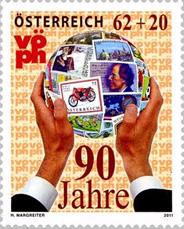
Scott: #B387P
Issued: 10.09.2011
90th Anniversary V.O.P.H. (Federation of Austrian
Philatelist Societies)



Inside # B387:
|
|
|
|
|
|
|
|
|
Austria #2171O |
|
Austria #2250O |
|
|
|
|
|
|
|
|
|
|
Austria #2162O |
Austria #B369P |
|
|
|
|
|
|
|
|
|
|
|
|
|
|
|
|
|
|
|
|
|
|
|
|
|
|
|
|
|
|
|
|

90 years of the
Federation of Austrian Philatelist Societies
This year organised
philately in
It was on 9 March 1921
that representatives of 16 stamp collectors' clubs came together in
the once famous Dreierl restaurant in Vienna's first district in order
to found the Federation of Austrian Philatelist Societies, the VÖPh. There
is no doubt that this was a farsighted decision, since despite all the ravages
of the 20th century, the Federation with its currently 300 member societies
continues to flourish unabated. The VÖPh continues to perform its
functions – the broad-ranging promotion of philately and the safeguarding of
collectors interests – in today's very
changed conditions. Incidentally, the fact that the anniversary is not
celebrated on the precise date of foundation but rather six months later has a
certain tradition in the history of the Federation. Previous anniversaries were
also mostly celebrated a few months later, on the occasion of the annual
Federation conference. An interesting example of this was the fifth Austrian
Philatelists' Conference, as it was known then, which was held on 11
September
On the question of the WIPA: during its varied 90-year history, the Federation
of Austrian Philatelist Societies has organised numerous large-scale
presentations and displays with considerable success, above all the famous
"Vienna International Stamp Exhibition", which has always attracted
international attention; the last event was held only a few years ago in 2008.
The Federation is managed by an executive board, the president of which has
been Mag. Anton Tettinek, and his deputy Ing. Alfred Kunz since the last
election conference.
The motif of the new commemorative shows a design by Hannes Margreiter, a
graphic interpretation of the global message of stamps as carefully guarded by
the Federation of Austrian Philatelist Societies.
Thanks to Lou Guadagno

Scott: #2565O
Issued: 07.05.2015
175th Anniversary of The Penny Black
 Inside #2565: G.B. #1 [Q-J]
Inside #2565: G.B. #1 [Q-J]
 Inside #2565 (In margin):
Inside #2565 (In margin):
Thanks to Lou Guadagno
and Prof. Plinio Richelmi

Scott: #????O
Issued: 02.04.2016
Classic Edition Stamps of 1850
 Inside #????:
Inside #????:
 Inside #????: Lombardy-Venetia
#4P(Italy)
Inside #????: Lombardy-Venetia
#4P(Italy)
 Inside #???? (In margin):
Inside #???? (In margin):
modified detail:
florals framing the arms shield outlined in black, not yellow.
Thanks to Lou Guadagno
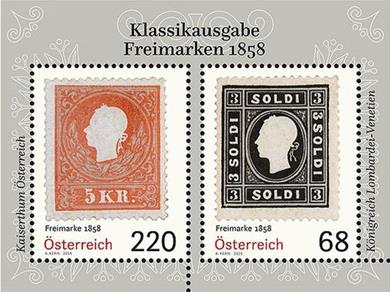
Scott: #????O
Issued: 12.10.2016
Classic Edition Stamps of 1858
 Inside #????:
Inside #????:
 Inside #????: Lombardy-Venetia
#8O
Inside #????: Lombardy-Venetia
#8O
Thanks to Michael
Merritt and Lou Guadagno

Scott: #????O
Issued: 08.05.2017
Postage Stamps
from 1860/62
 Inside #????:
Inside #????:
 Inside #????: Lombardy-Venetia
#14O
Inside #????: Lombardy-Venetia
#14O
********************************************************************************

Nennwert: EUR 2,88, Ausgabetag: 15.3.2017, Markengröße:
32 x 40 mm
Blockgröße: 80 x 60 mm, Entwurf: Anita Kern, Druck: Joh. Enschedé Stamps B. V. / Offsetdruck
Auflage: 130.000 Blocks mit 2 Marken,
Martin wrote: This was
the original announced sheetlet - but it was not
issued. The corrected variety - that we have in our albums - came out later
this year.
On top it was added /62
while on right margin now only reads "Venetien"
instead of "Königreich Lombardei
Venetien"
came across this on a german site, where they featured "not issued"
stamps.
Michael added: One for
the books! I love unissued SoS…now the trick,
how do we get this one to appear on a real issue? Nothing better than
“Not-stamps-on-stamps on stamp”!
Martin wrote: the
"real" SOS remained unchanged - only the marginal decoration had
slightly changed because of some historical reasons. After the Independence war
of 1859 (battle of Solferino) Austria had lost the
Lombardy part of its former Kingdom to France (later to Sardinia) and kept only
the Venetian part until 1866.
Thanks to Martin
Hirschbühl


Scott: #2690a-bO
Issued: 16.09.2017
Classic Stamps 1867 - a joint issue with Hungary
 Inside #2690a: Austria-Hungary #29P
Inside #2690a: Austria-Hungary #29P
 Inside #2690b: Austria-Hungary #33O
Inside #2690b: Austria-Hungary #33O

Scott: #2690O
About Postage Stamps
From 1867
The year 1867 was a
significant interlude in the history of the Hapsburg monarchy. The
Austro-Hungarian Compromise converted the Austrian Empire into the dual
monarchy of Austria-Hungary, and that, of course, had an impact upon the postal
service. The postage stamp issue of 1867 reflects this circumstance.
Thanks to the
constitutional real union, Hungary was now an independent state with equal
rights, while the same monarch, Franz Joseph I, reigned as the Emperor of
Austria and the Apostolic King of Hungary. As a result, from 1st May 1867
onwards, Hungary had its own independent postal administration. However, the
postage stamp issue of 1867 is an identical issue which was used by both postal
administrations. The denomination “Kr” for Kreuzer or
Krajcczar was appropriate for both countries. This
postal series was issued on 1st June 1867 in denominations of 2, 3, 5, 10 and
15 “Kr.” for Hungary (which also included Transylvania). In the Austrian Empire
it only became available once all of the previous postage stamp series had been
used up. The 25 and 50 Kr. denominations were issued on 1st September 1867. The
stamps were valid in Hungary (“Transleithanien”)
until 31st July 1871 and in the Austrian “Cisleithanien”
until 31st October 1884.
As for the 1860 issue,
the postage stamps issued in 1867 once again showed the Emperor’s head turned
to the right, but now with clearly distinguishable facial features. The
depiction of the imperial bust is framed by a beaded circle, which is
surrounded by curved ornaments. The denomination is printed below the design.
The design for the 50 Kreuzer stamp differs
significantly from the other denominations.
The stamps were printed
on counter sheets of 100 stamps or 80 stamps in the case of the 50 Kreuzer stamp, both counter sheets bearing a watermark.
They are differen- tiated
by “coarse” or “fine” printing: until the end of 1874 a relatively thick, rough
paper was used, with the coarse character being produced during printing
through use of a textile underlay on the counter roller. From 1874 onwards a
thinner, smoother paper was used. In the case of the 5 Kreuzer
stamp there are also two different types: type II came into being from 1872
thanks to the use of a new die. Within types I and II a finer distinction is
also made between variants a and b, based on different print details.
“Fine printed” type II
stamps are thus only available in the Austrian issue, since the Hungarian
stamps had been in circulation since 1871. 1867 stamps which were used in
Hungary are especially popular with collectors due to the very short period for
which they were valid. Furthermore, in the case of the fine printed 1867
stamps, there are many variations in perforation.
The current block of
stamps from the “Classic Editions” series, a joint issue with Hungary, shows a
brown 50 Kreuzer stamp and a type I coarse printed 5 Kreuzer stamp in a reddish colour.

Scott: #????O
Issued: 18.03.2018
Classic Stamps 1863-64
 Inside #????:
Inside #????:
 Inside #????: Lombardy-Venetia
#22O
Inside #????: Lombardy-Venetia
#22O
Thanks to Lou Guadagno
and Komlóssy Zoltán

Scott: #????O
Issued: 17.05.2019
Classic Stamps 1883
 Inside #????:
Inside #????:
 Inside #????:
Inside #????:
Thanks to Richelmi
Plinio and Komlóssy Zoltán
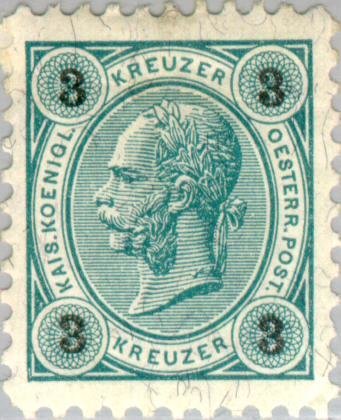
Scott: #????O
Issued: 29.09.2019
Classic Stamps 1890
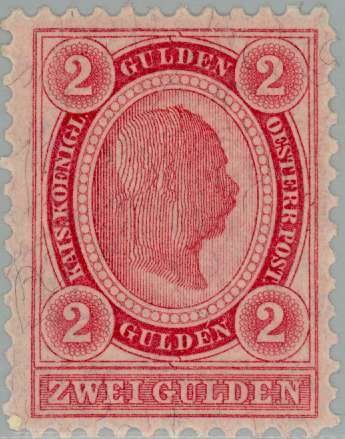 Inside #????:
Inside #????:
 Inside #????:
Inside #????:
In the background margins of the s/s are simplified enlargements
of the stamp frames.
Thanks to Lou Guadagno

Scott: #2844O
Issued: 07.03.2020
Classic Stamps 1891-96
 Inside #2844a: Austria #65O
Inside #2844a: Austria #65O
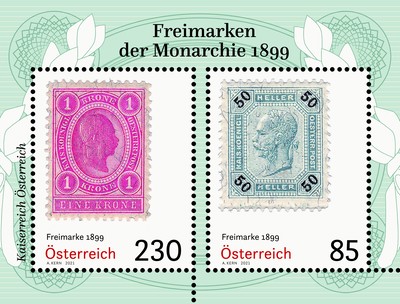 Inside #2844b: Austria
#69O
Inside #2844b: Austria
#69O
Thanks to Lou Guadagno
![[Definitives - Classic Edition, type ]](Austria_image231.jpg)
Scott: #????O
Issued: 06.03.2021
Classic Stamps 1899
 Inside #????: Austria
#83O
Inside #????: Austria
#83O
 Inside #????: Austria
#81O
Inside #????: Austria
#81O
Thanks to
Komlóssy Zoltán

Scott: #B????O
Issued: 24.09.2021
Stamp Day 2021 / 100th Anniversary of the V.O.Ph
 Inside #???? (in margin): Austria #B278O
Inside #???? (in margin): Austria #B278O
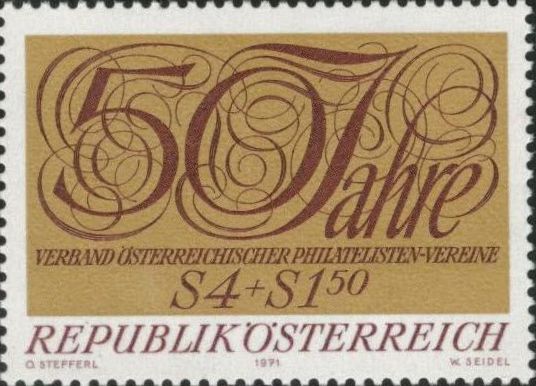 Inside #???? (in
margin): Austria #B303P
Inside #???? (in
margin): Austria #B303P
 Inside #???? (in margin): Austria #B327O
Inside #???? (in margin): Austria #B327O
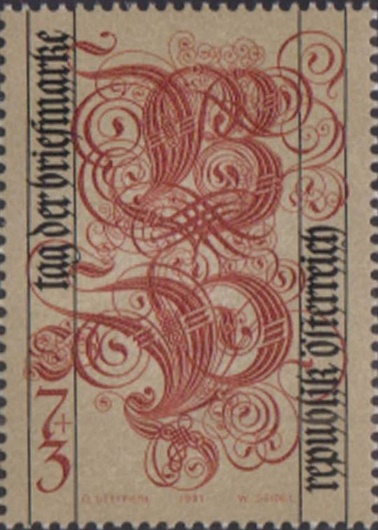 Inside
#???? (in margin): Austria #B371P
Inside
#???? (in margin): Austria #B371P
 Inside #???? (in margin): Austria #B357O
Inside #???? (in margin): Austria #B357O
 Inside #???? (in margin): Austria #B343O
Inside #???? (in margin): Austria #B343O
Thanks to Lou Guadagno

Scott: #????O
Issued: 22.10.2021
Classic Stamps 1905
 Inside #????: Austria
#89P
Inside #????: Austria
#89P
 Inside #????: Austria
#105O
Inside #????: Austria
#105O
Thanks to Zoltán Komlóssy
![[Definitives from 1908, type ]](Austria_image253.jpg)
Scott: #????O
Issued: 05.03.2022
Classic Stamps 1908
![[The 60th Anniversary of the Reign of Emperor Franz Josef I, type AJ]](Austria_image254.jpg) Inside #????: Austria
#127O
Inside #????: Austria
#127O
![[The 60th Anniversary of the Reign of Emperor Franz Josef I, type W]](Austria_image255.jpg) Inside #????: Austria #111P
Inside #????: Austria #111P

Scott: #2998O
Issued: 01.07.2022
Mercury
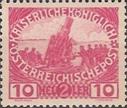 Inside #2998 (In margin): Austria #P1O
Inside #2998 (In margin): Austria #P1O
About Mercury
(1851-2022)
Mercurius, Mercury, Hermes: the
god of trade and messenger. His portrait graces the first newspaper stamps and
even in 2022 his symbolic power for philately and
postal services remains intact.
The famous "Mercures"
issued from 1851 to 1856 served as inspiration for the innovative philatelic
reinterpretation of the ancient messenger of the gods. In line with this
meaning, the world's first newspaper stamps served exclusively to pay for
newspaper shipping. 2022 marks yet another milestone
with this miniature sheet.
The sheet was designed by crypto artist ARI
PRATAMA and the publisher ENCODE Graphics. Founded
in 2021 by Austrian crypto artist PR1MAL CYPHER, it is the first book and art
publisher to combine the digital world of NFTs (Non Fungible Tokens) and the
crypto scene with physical comics. The
results of this connection, also coveted for their digital uniqueness, are called "phygitals".
With the new Crypto stamp Art, world-famous
crypto artists will be integrated into the world of philately in the near
future. For collectors, this will
create attractive opportunities to find and appreciate their treasures in both
worlds.
Lou Wrote: You
should change the scan for the SoS
to "Austria P4-- design component: Mercury head only", per the
attached. The Mercury head on the s/s is red, not blue as the #P1
ID that Martin sent.
 Inside #2998 (In margin):
Austria #P4O
Inside #2998 (In margin):
Austria #P4O
I adding #P4 here because both of them are wonderful
stamps. But, I stick to my approach, that when there
is no clear presentation of a particular stamp, I present the first stamp from
the series.
Thanks to Martin
Hirschbühl

Scott: #B411O
Issued: 14.09.2022
Stamp Day
 Inside #B411: Austria #119aP
Inside #B411: Austria #119aP
Thanks to Lou Guadagno

Scott: #????O
Issued: 03.10.2022
Treasures from the postal archive: first Austrian art
exhibit 1947



 Inside
????: Austria SW #842
Inside
????: Austria SW #842



 Inside: Austria
never issued (1946?)
Inside: Austria
never issued (1946?)



 Inside: Austria
never issued (1946?)
Inside: Austria
never issued (1946?)
Thanks to Richelmi
Plinio and Lou Guadagno
![[Definitives of 1916 and 1918, type ]](Austria_image290.jpg)
Scott: #3052a-bO
Issued: 04.03.2023
Classic Stamps
 Inside #3052a: Austria #148PP
Inside #3052a: Austria #148PP
 Inside #3052b: Austria #159P
Inside #3052b: Austria #159P

Thanks to Zoltán Komlóssy

Scott: #B413O
Issued: 05.05.2023
Stamp Day
 Inside #B413: Austria #370P
Inside #B413: Austria #370P
Thanks to Lou Guadagno

Scott: #3115a-bO
Issued: 21.02.2024
Classic Stamps Stamps of the
Monarchy 1917-19
 Inside #3115a: Austria #166O
Inside #3115a: Austria #166O
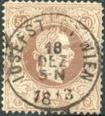 Inside #3115b: Austria #167O
Inside #3115b: Austria #167O
Lou wrote: Reviewing
the WOPA + Austria 2024 site for this issue, I'd
found the following: "From the end of 1917 to 1919, as seen on
the miniature sheet, they were printed on fibrous paper". This refers to granite paper, where colored silk
fibers were added to the paper during production and show as little
curled colored lines in the white areas of the stamp and margins. Enlarging the
SoS on the s/s does show
some of these lines, and they are very apparent on the attached
scans.
The Scott #s sent
previously are not correct as they are for the ordinary paper issues of
1917. Sc #174-175, the later issued granite
paper stamps.


Austria #174-5
Thanks to Lou Guadagno
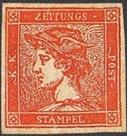
Scott: #????O
Issued: 23.08.2024
Stamp Day
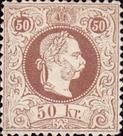 Inside #????:
Austria #630P
Inside #????:
Austria #630P

Lou wrote: The new Austria SoS has a face cost of € 6,68-- about $7.50. One third of that is for a charity. The Austria post rate for ordinary letter or postcard, domestic and EU, is €1,00, the rest of the world is € 1,80. What will this stamp be for--heavy packages? insured mail? to bilk collectors?
Thanks to Zoltán
Komlóssy and Lou Guadagno

Scott: #????O
Issued: 11.02.2025
150 years of Rohrpost

Inside #???? (in
background): Austria Rohrpost RK5 Pneumatic Mail
Postal Stationery Cardletter
When the pneumatic tube systems operated in some European cities proved their worth for particularly fast mail delivery, a city pneumatic tube system was also built in Vienna in 1875.
The "pneumatic tube network" connected ten stations, all of which were located within today's belt. Pipes with an inner diameter of 65 millimeters were laid at a depth of around one meter, through which letters, postcards and telegrams were transported in metal capsules using air pressure at a rate of 20 kreuzers. From 1880, there were special red-painted post boxes for the pneumatic tube, which were emptied every 20 minutes, and the mail contained therein was then sent on by pneumatic tube. In its heyday in 1913, the route network comprised 53 pneumatic tube stations over more than 80 kilometers. Severe damage in the Second World War and the spread of telephones and telexes led to the pneumatic tube system being discontinued in 1956 due to uneconomical use.
Lou Added: The pneumatic mail postal card on the s/s is not the first type issued in 1875, but a later Letter Card, issued in 1893, which, when sent folded, allowed the sender to have privacy for his message. All the pneumatic mail postal cards were issued on pink stock to differentiate them from ordinary mail, and were delivered locally within hours of mailing.

Thanks
to Martin Hirschbühl

Scott: #????a-bO
Issued: 07.03.2025
Classic Stamps Stamps of the
Monarchy 1917-18
 Inside #????a:
Austria #170P (Czech Rep)
Inside #????a:
Austria #170P (Czech Rep)
 Inside #????b: Austria #171P
Inside #????b: Austria #171P
Thanks to Lou Guadagno
Best website related:
http://www.aeiou.at/aeiou.stamp.years
![]()
Wish List

Austria #1
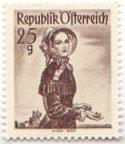
Austria #2 + for Hungary, Slovakia, Ukraine

Austria #4 for Hungary, Paraguay

Austria #P1

(!)
Austria #P4 for Austria, Niger, Ajman, Lesotho, Central
Africa

Austria Type N1 for Hungary

Austria-Hungary #33 for Hungary

Austria #40 for Cape Verde, Cuba, Hungary, Korea north,
Mongolia, Russia, Suriname and many more

Austria #B5 for Czech Rep.

Austria #53

Austria #65

Austria #69

Austria #81

Austria #83

Austria #105
![[The 60th Anniversary of the Reign of Emperor Franz Josef I, type AJ]](Austria_image254.jpg)
Austria #127

Austria #144
for Chad

Austria #166

Austria #167

Austria #B76

Austria #B110 for Austria, Hungary, Korea north, Mongolia

Austria #219a for Aden!!!!

Austria #339

Austria #B224 for Guinea
Bissau

Austria #B272

Austria #B278

Austria #525

Austria #712 for Guinea Bissau

Austria #B327
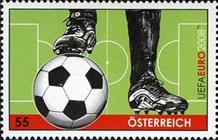
Austria #B335
for Liberia

Austria #B338 for Liberia

Austria #B343 + for
Korea north
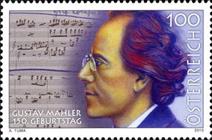
Austria #B347

Austria #B357

Austria #B369

Austria #B370aO

Austria #994 for Liberia

Austria #1005

Austria #1146 for Korea
north
![[Birds - The 25th Anniversary of the Austrian World Wildlife Foundation, Scrivi BDC]](Austria_image373.jpg)
Austria 1988 for Sierra Leone






Austria #1844 for Chad


Austria #1888

Austria #1934O


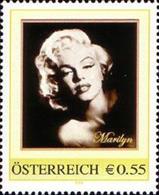



Austria #2162

Austria #2171





![[Definitives - Classic Edition, type ]](Austria_image231.jpg)
Austria #???? (2021)

Austria #B???? (2021)

Austria #???? (2021)
![[Definitives from 1908, type ]](Austria_image253.jpg)
Austria #???? (2022)

Austria #2998 (2022)

Austria #B411 (2022)
![[Definitives of 1916 and 1918, type ]](Austria_image290.jpg)
Scott: #3052a-bO

Scott: #????O

Austria #B413 (2023)

Austria #???? (2024)

Austria #???? (2024)

Scott: #????a-bO

Lombardy-Venetia

Lombardy-Venetia #1 for Italy

Lombardy-Venetia #14

Lombardy-Venetia #22
****************

Austria Telegraph stamp of 1873
(Michel Telegraph stamp #6)
for
Hungary
****************

Austria Military Field Post #M23 for St. Vincent Grenadines

![Location of Austria (dark green)– on the European continent (light green & dark grey)– in the European Union (light green) — [Legend]](Austria_image004.gif)











